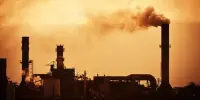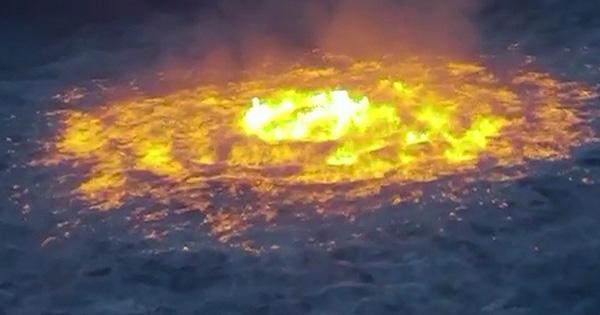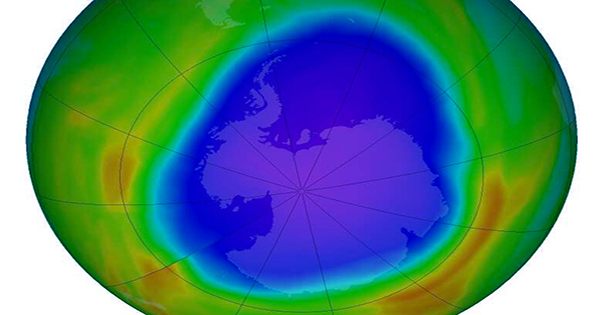It was not just typical midsummer occurrence that hit western North America with a heat wave in late June and early July 2021. It exceeded typical area temperatures for the nine-day period by 10 degrees Celsius (18 degrees Fahrenheit) overall and by an incredible 30 degrees Celsius (54 degrees Fahrenheit) on some days in some locations, from British Columbia through Washington and Oregon and beyond.
It established a new national standard for all of Canada at 121.3 F at Lytton, British Columbia, among many other new day records. The following day, a wildfire that was one of many caused by the hot, dry weather completely destroyed the town. Across the region, at least 1,400 people died from heat-related causes.
Within weeks, scientists blamed the event’s extremity largely on climate change. Now, a new study published in the journal Nature Climate Change confirms that finding and for the first time fully explains the various mechanisms that they claim caused the mind-blowing temperatures, some of which are specifically related to the climate and others of which are more in the category of catastrophic coincidences.
“It was so extreme, it’s tempting to apply the label of a ‘black swan’ event, one that can’t be predicted,” said lead author Samuel Bartusek, a Ph.D. student at the Columbia Climate School’s Lamont-Doherty Earth Observatory. “But there’s a boundary between the totally unpredictable, the plausible, and the totally expected that’s hard to categorize. I would call this more of gray swan.”
In order to create an intimate portrayal, the study combined daily weather records from the weeks before and during the heat wave with climate data going back to the 1950s. A core conclusion: Such an event would have been virtually impossible absent human-induced warming. Since the 1950s, atmospheric warming has changed the probability of a 1-in-200-year event, which was once impossible to happen.
According to the experts, such heat waves may occur in the region every ten years by 2050 if global warming continues at even a moderate rate.
Average global temperatures have risen less than 2 degrees F in the last century. Small increases in temperature, however, may change how the atmosphere and land interact, increasing the likelihood of high temperature spikes above and beyond the rise in normal temperature.
It was so extreme, it’s tempting to apply the label of a ‘black swan’ event, one that can’t be predicted. But there’s a boundary between the totally unpredictable, the plausible, and the totally expected that’s hard to categorize. I would call this more of gray swan.
Samuel Bartusek
Simply put, the report claims that a large portion of the 2021 heat wave was caused by the compounding impacts of increased general temperatures, particularly the drying of some regions’ soils. A third of the heat wave was also contributed by what the researchers refer to as “nonlinear” forces, which are short-term weather patterns that helped trap heat that may have been increased by a changing climate.
They claim that one key factor was the disturbance of the jet stream, which typically moves air in a more-or-less circular pattern from west to east across the midlatitudes of the Northern Hemisphere. However, the jet stream stopped and curved into enormous waves with four north-south peaks and troughs before the heat wave.
There are concentrated high-pressure systems beneath each peak; high pressure causes air to be compressed more and more as it gets closer to the surface, which causes heat to be produced. One of those systems made landfall in western North America and remained there for many days, resulting in the formation of what meteorologists refer to as a “heat dome.”
According to some scientists, the warming caused by humans is increasing the frequency and severity of large jet-stream waves. According to them, recent Arctic warming is significantly reducing the temperature differential that normally separates the cold northern air from the warmer southern air, which is destabilizing the system.
This idea is still being debated. That said, part of the groundwork for the new study was laid by coauthor Kai Kornhuber, who published a 2019 study identifying such meanders as threats to world food security should they hit multiple major agricultural regions simultaneously.
In 2021, significant heat waves linked to meanders simultaneously affected not only North America but also a large portion of Scandinavia, Eastern Europe, western Russia, and the Caucasus, as well as northwestern Siberia.
Western North America’s was by far the worst. A number of smaller-scale air waves produced in the western Pacific Ocean, according to the scientists, were one contributing element. These traveled east and, when they came into contact with land, clung to the bigger jet-stream wave and amplifi ed it. Because they were able to predict these patterns roughly 10 days in advance, meteorologists were able to precisely predict the heat wave.
According to the researchers, climate-driven drying that has affected most of the American and Canadian west in recent decades and decreased soil moisture levels in many regions is a longer-term major influence.
This resulted in less water from plants evaporating during the heat wave, which would have previously helped to balance out the heating of the air close to the surface. In some areas, the surface heated the air above it more effectively because there was less evaporation. In fact, the researchers discovered that the locations with the driest soils had the worst heat wave.
“Global warming is gradually making the Pacific Northwest drier,” said study coauthor Mingfang Ting, a Lamont-Doherty professor, pushing it into a long-term state where such extreme events are becoming ever more likely.
Extraordinary heat and drought continue to affect the region. Many daily temperature records were broken in mid-October of this year, with increases more typical of hot summer than mid-autumn. These included 88 degrees in Seattle on Oct. 16 a full 16 degrees above the previous daily record.
The same day, there were records in Vancouver; Olympia, Wash.; and Portland, Ore., its fifth consecutive day in the 80s. The intense heat and dry conditions have ignited forest fires that are so severe and extensive that on October 20, Seattle had the worst air quality of any major city in the world, surpassing perennial favorites Beijing and Delhi.
“We can certainly expect more hot periods in this area and other areas, just due to the increase in global temperatures, and the way it shifts the probability of extreme events by huge amounts,” said Bartusek.
















